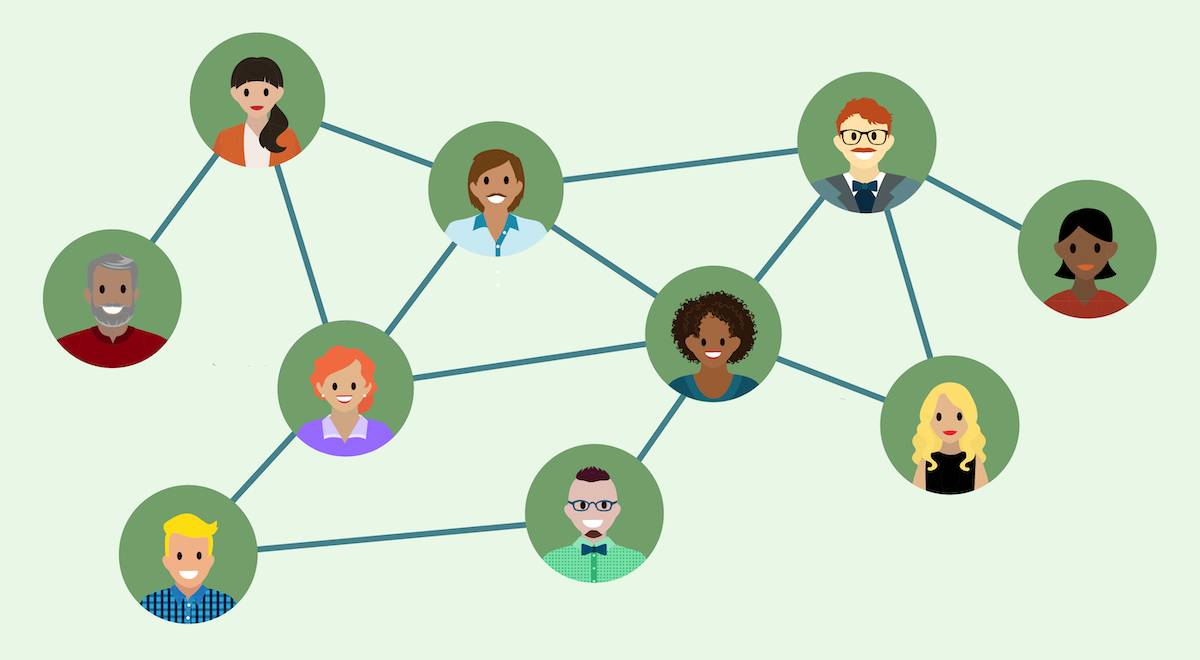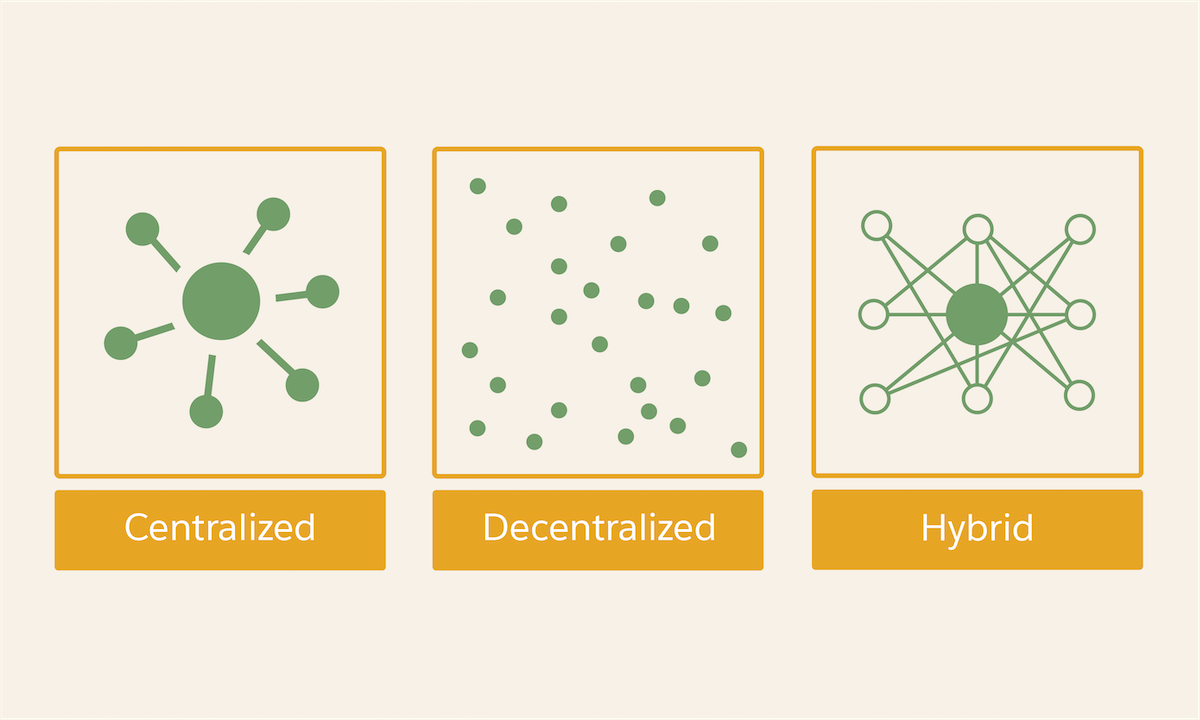Guide and Empower Content Teams
Learning Objectives
After completing this unit, you’ll be able to:
- Explain content roles and responsibilities.
- Define content governance.
- Choose the right governance model.
- Establish a content center of excellence.
- Implement change management measures.
Content Is People
When you get right down to it, people are really the heart of content operations. Sure, you can design your processes and select the right tools. But who follows those processes? People. Who uses those tools? People.
So if you want to improve your organization’s content operations, you have to guide and empower the people in your organization who are involved in the production process. It’s a critical part of ensuring that you can consistently create high-quality, on-strategy content. Let’s get started!
Define Roles and Responsibilities
In most organizations, it takes a lot of people to deliver content to customers. And those people have a wide range of responsibilities, skills, goals, and priorities.
To streamline your content operations, start by defining the roles and responsibilities of everyone who participates in the content development process. This helps you identify gaps, inefficiencies, overlaps, and other problem areas.

Content Roles
Every organization is different, but here are a few of the most common roles necessary for content production.
| Role | Description |
|---|---|
|
Content strategist |
The content strategist aligns the organization’s business objectives with the needs of its customers. They craft the content experience and determine how content fits into the overall customer journey. |
|
Information architect |
An information architect designs the structure of a digital space and organizes the information in a way that is meaningful and useful for its visitors. They develop navigation systems, content models, and content tags. |
|
Writer |
The writer is responsible for planning, researching, and writing content that adheres to the organization’s content strategy and writing guidelines. The best content writers have a deep understanding of their audience, and their content provides value to that audience. |
|
Creator |
Not all content creators are writers. Your content roles might also include video specialists, podcast producers, and more. |
|
Designer |
The designer creates visual assets required by the content. |
|
Subject matter expert |
Subject matter experts provide input to writers during the planning stage of the content lifecycle. They also review content drafts to ensure that the information is accurate and useful. |
|
Editor |
The editor reviews the writer’s content to make sure it’s consistent with the organization’s editorial and brand guidelines. |
|
Publisher |
The publisher is in charge of delivering or releasing content to your audience. Depending on your organization or department, that might be a production assistant, CMS editor, release manager, or someone else. |
|
Content engineer |
The content engineer is responsible for the technical implementation of the organization’s content strategy and operations. They select, configure, and integrate content tools; optimize and automate content processes; and develop a framework for implementing the content model. |
|
Content analyst |
The analyst gathers data to measure content effectiveness. They transform that data into actionable insights that can help the organization improve its content and refine the content strategy. |
In your organization, these may or may not be dedicated roles. In smaller or less mature companies, sometimes content folks wear multiple hats. The roles listed above simply represent a set of responsibilities, and those responsibilities might be assigned to a specific role or parceled out to someone with another job title.
Content Responsibilities
Speaking of responsibilities, it’s important to determine who is doing what during the content production process. Many organizations find it helpful to create a RACI chart to define the content roles and responsibilities on each team.
RACI stands for responsible, accountable, consulted, and informed, and essentially a RACI chart is a responsibility matrix that maps tasks and deliverables to the various people in your organization. To find out more about RACI charts and download a handy template, see the Resources section at the end of this unit.
Common Problems
Here are a few operational issues you can potentially encounter when defining your content roles and responsibilities.
- Role ambiguity: Multiple people are performing the same tasks, or tasks are neglected because no one thinks they own that responsibility.
- Skill gaps: Individuals don’t have the necessary expertise to complete certain tasks or deliverables.
- Unbalanced workload: Some people are responsible for more work than they can reasonably finish in a given week or month. Others are underutilized.
- Lack of authority: There’s no way to enforce content decisions and guidelines.
Many of these problems can be uncovered and addressed during the workflow design workshop that you conduct with your team. (More about that in the next unit.)
The Need for Content Governance
After defining the roles and responsibilities of the people involved in the content production process, you can decide how you can help those people create content that aligns with your organization’s content strategy. That’s where governance comes in.
Content governance is a framework that dictates how content is created and managed. It’s not a specific document or a policy. Instead, it’s a way of doing things, and it should be baked into the culture of your organization and your content workflow.
At each stage of the production process, you must help people make the right decisions about content.
Choose the Right Governance Model
So how do you implement content governance? First, determine which governance model is right for your organization.

Centralized Model
A single team of specialists produce all of the organization’s content with input from subject matter experts. For smaller organizations, this model can be an effective way to control the quality of content. However, it doesn’t scale very well, and it can be perceived as authoritarian or restrictive.
Decentralized Model
Each department is responsible for creating and managing their own content. The departments may or may not include content specialists, such as professional writers, editors, and content strategists.
Although this approach tends to result in a fragmented, confusing experience for customers, it does have a few advantages. It ensures that experts in each department have the ability to publish content. It can also increase the rate of content production by eliminating potential bottlenecks of the centralized model.
Hybrid Model
Multiple departments produce content, but a central team manages the organization’s content strategy and the overall content experience. If implemented well, this blended approach offers the advantages of both the centralized and decentralized models. You can maintain quality and improve the customer experience without wrestling autonomy away from the departments in your organization.
The Brains of the Operation
In most organizations, several departments publish content: marketing, product, support, documentation, training, and so on. But content doesn’t exist in a vacuum—it’s part of a vast ecosystem. Your customer doesn’t know or care which team created the content assets. They experience the content as a whole, and the experience should be seamless.
That isn’t possible unless teams have a shared understanding of your organization’s content strategy. So how do you encourage teams to collaborate? How do you guide and coordinate their efforts?
We recommend establishing a content center of excellence that includes content experts and representatives from each department. Here’s what the center of excellence can do.
- Lead: Cultivate a culture that values content. Maintain the content strategy and manage big initiatives, such as audits, content mapping, and migrations.
- Guide: Establish best practices and guidelines. Share actionable insights, analytics, and customer research.
- Coordinate: Connect silos to prevent inconsistencies and duplication of effort.
- Streamline: Help teams improve their content workflows and build better infrastructure. Create an operational roadmap that can drive content transformation.
- Extend: Provide writing or editorial support to teams that lack skills or resources.
The responsibilities of your center of excellence might look a little different, but the ultimate goal is the same—to help your organization enforce its content strategy and deliver high-quality content. To learn more about creating a center of excellence, see the Resources section.
Promote a Cultural Shift
Implementing and enforcing your content strategy inevitably requires some organizational changes, whether they’re related to roles, responsibilities, governance, processes, or all of the above.
Unfortunately, change happens slowly in most companies. How can you ensure that people adopt the changes you’re planning to make? The answer is change management.
Change management refers to the set of measures an organization takes to prepare, equip, and support people who must embrace and sustain change. Here are a few tips that can help your organization manage content-related changes and promote a cultural shift.
- Secure an executive sponsor who understands the value of content and can advocate the content strategy in an active, visible way.
- Evangelize the content strategy by conducting presentations and workshops.
- Develop a training plan to educate content teams and address skill gaps.
- Look for champions across the organization who can guide and help others.
- Create a communication plan to broadcast upcoming changes.
- Provide templates, checklists, guidelines, process documentation, and other materials that help people make the right decisions about content.
- Create a central place where employees can access resources and ask questions about content, such as a Chatter group or a Slack channel.
- Promote content success stories internally to reinforce the value of the content strategy.
Hopefully that list inspires you to come up with your own ideas for encouraging organizational and cultural change. If you need help creating a plan of action, check out this comprehensive Change Management Toolkit.
From People to Process
Now that we’ve talked about operational considerations related to the people in your organization, it’s time to tackle the processes they follow. In the next unit, you learn how to design an effective workflow for your content teams.
Resources
- Article: Use A RACI Chart to Define Content Roles and Responsibilities
- Article: How to Hire Content Strategists
- Article: Authoring and Governance Models: Finding a Balance
- Article: Center of Excellence: Why Create One
- PDF: Change Management Toolkit
- Article: Cross Functional Collaboration in a Culture of Continuous Improvement
